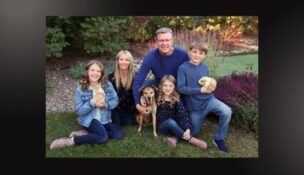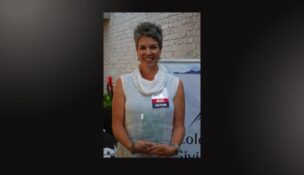The evolution of a vegan chef
Chef Jesse Moore embraces good food and good flavors
Chef Jesse Moore //February 3, 2017//


The evolution of a vegan chef
Chef Jesse Moore embraces good food and good flavors
Chef Jesse Moore //February 3, 2017//

I grew up in a tiny port town in Downeast Maine, surrounded by clam diggers and fisherman. The whole farm-to-table, old-school style of eating is really hip nowadays, but it’s a way of life there. My parents grow all their produce in the summer and preserve it in cans for the winter. It’s just how they do things.
I had no idea how cool this was until I moved away and came home 13 years later. And somewhere along the way, I became a vegan, a chef and a devoted maker of good food.
I learned to cook while I was still living in Maine. I got really into food and booze. I liked to eat a lot of rich, fatty stuff—I mean, I was just crushing sausages and meat. (And this will sound insane, but I’ve never liked seafood. I’ve just never been into it.) I was 18 when I read a book that changed everything.
It’s called Mad Cowboy by Howard Lyman. Lyman was a cattle rancher in Wyoming, and his entire thesis was about transitioning old cattle farms into organic operations and promoting vegan nutrition at the same time—really going against modern meat production practices. He uncovered a lot of stuff in the industry that people don’t know about.
It flipped my head completely.
Of course, being 18 in Maine meant that I didn’t have access to really good meat. It just wasn’t in my budget to buy local grass-fed cattle. Going vegan made sense. So, I emptied my cupboards and never looked back.
I came to Colorado in 2002 and worked in restaurants like WaterCourse, Steuben’s Food Service and Beast + Bottle. WaterCourse was nice because it got me away from meat. But as I grew as a chef, I realized that my dietary preferences have nothing to with what other people find pleasurable about food. I wanted to make good food no matter what. Working at Beast + Bottle solidified that. People don’t need to eat like I do, but if I’m cooking animals, I want the food be as good as possible so nothing goes to waste.
I first met with Chef Brandon Beiderman while working at Steuben’s, and later while opening Ace Eat Serve. After opening Ace Eat Serve, I had the opportunity to work at top restaurants in Maine, so I moved back home. But in 2015, Chef Brandon offered me the Chef de Cuisine position back at Ace Eat Serve. I took it immediately.
A few months later, I was promoted to executive chef, and that’s when I began re-envisioning the menu to include more vegetarian and vegan items. In fact, at Ace we offer a fully vegan printed menu—along with gluten-free, vegetarian and dairy-free menus. We still have lots of quality meat options, but my goal is to make the vegetarian and vegan options just as good.
People who come to Ace are super willing to go beyond traditional Asian flavors and try different things. For instance, the traditional fermented fish flavor in kimchee can be kind of offensive. So, I decided to omit the fish sauce which helped make it both vegan and more approachable. It’s still spicy, salty, funky and fermented, but a little less abrasive. These days, I make about 350 pounds of vegan kimchee a week.
The bao buns at Ace are also vegan. A lot of bao buns—especially the frozen bulk varieties—use milk powder, which can turn the buns golden as the milk proteins break down during steaming. We wanted the traditional pure white one buns. When we tried leaving out the milk, we liked the taste much better. We’ve stuck with this method, and we’re one of only a few places in town creating in-house vegan bao buns.

Creating good food is all about creating good flavors. I’ve learned a lot of tricks over the years to create flavor without using meat or butter. That’s why I gravitated toward Asian cuisine. Asian cuisine is all about using clean, bright and bold flavors. Vietnamese vegan food is a real thing, whereas French vegan food would take some major adjustment. With things like charred onion, ginger, basil, there’s an intensity of flavor that can shine through without meat weighing it down.
If I do want a heavy, brown broth, there are ways to achieve it. I often use Japanese sea kelp, or kombu, to impart that savory umami flavor. I also use a ton of mushrooms—usually a mix of dried and fresh shiitake, hon shimeji, oyster, and button mushrooms. Throwing them in the food processor helps release their juices and layer the flavors to create a deep, savory vegan broth.
A lot of people ask how I can still cook meat that tastes good while keeping my vegan lifestyle. My thinking is that I owe it to my guest to try the food, taste it and know it’s good. So, I do taste it. I mean, I’m not taking a big bite of someone’s steak to tell if it’s done properly. Instead, I’ve trained my palate for small tastes. I’ll taste the sauce that goes into the Mongolian Beef or the chicken broth in the Tom Kha Soup.
Most good chefs harbor the philosophy of embracing good produce as well as quality, sustainable meats. It’s taken me years to realize it, and I owe it both to my time here in Colorado and my childhood in Maine. Several of my tattoos pay homage to my home state, and my knuckle tattoos say “good food,” because that’s what I’m always going for.
Chef Jesse Moore is the executive chef at Ace Eat Serve.























